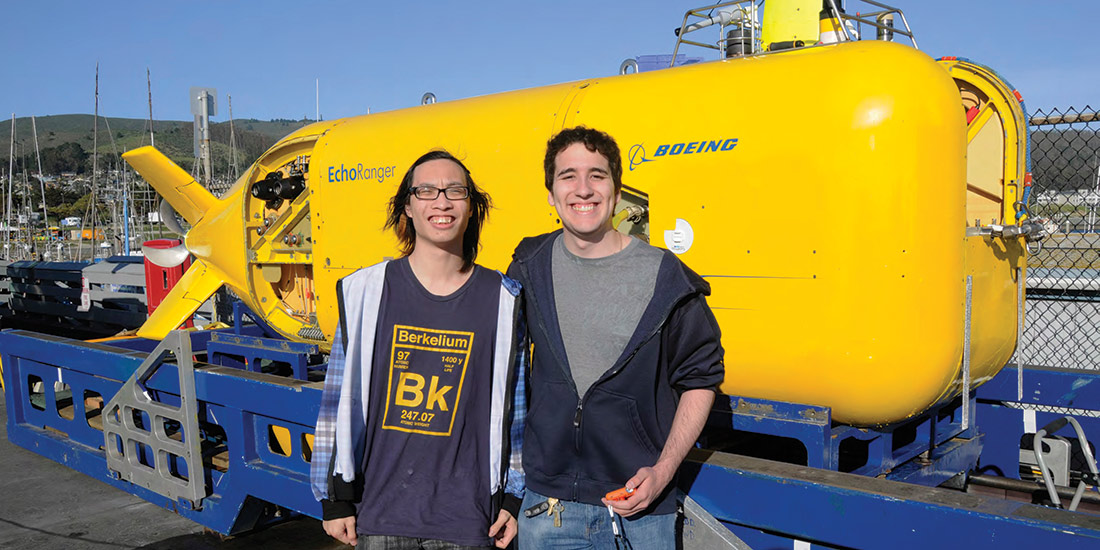 Jimmy Lee (B.S.’15 NE, at left) and nuclear engineering student Chris Figueroa tested the submersible for evidence of contamination after its descent to find the U.S.S. Independence, sunken off the Farallon Islands. (Photo courtesy the researchers)
Jimmy Lee (B.S.’15 NE, at left) and nuclear engineering student Chris Figueroa tested the submersible for evidence of contamination after its descent to find the U.S.S. Independence, sunken off the Farallon Islands. (Photo courtesy the researchers)Radioactive wrecks?
Marine archaeologists have a lot of things to think about while probing the deep for lost wrecks, but radiation exposure is normally not one of them. But exploring the U.S.S. Independence, which was scuttled in 1951 just south of the Farallon Islands, 40 miles off the coast of San Francisco, was a different story. The aircraft carrier has a radioactive history. First, the military used it as a target for atomic bomb tests at Bikini Atoll. Then it was loaded with 55-gallon drums of low-level radioactive waste and sent to the bottom of the Pacific, presumably for safekeeping.
Sixty-four years later, marine archaeologists with the National Oceanic and Atmospheric Administration (NOAA) located the wreckage, using an autonomous underwater vehicle to pinpoint its final resting place.
Concerned about contaminating their submersible, NOAA researchers turned to nuclear engineering professor Kai Vetter for help. Vetter explained that because water serves as an excellent shield, radiation extends only inches from contaminated materials. In any case, the 30-year half-lives of the isotopes in question means that only a quarter remain today.
Nonetheless, Vetter brought a team to Half Moon Bay to test the submersible. Sure enough, there was no evidence of contamination.
Read more: Radiation safety for sunken-ship archaeology
